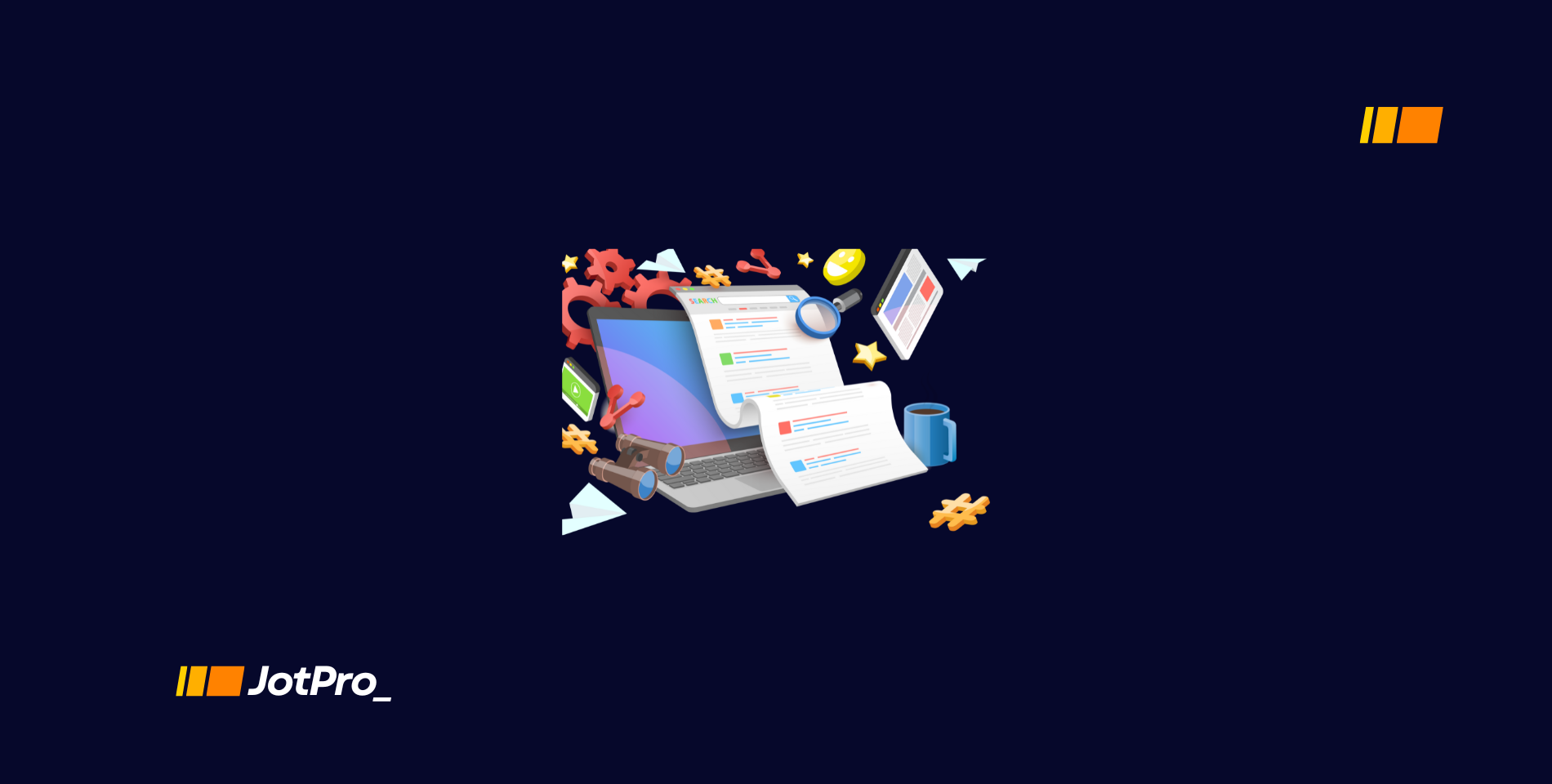In the ever-evolving world of digital marketing, one term that you may have come across is “content optimization”. But what exactly does this term mean, and why is it so important for your online presence?
In this blog post, we will delve into the concept of what is content optimization, its significance, and how you can leverage it to boost your website’s visibility and attract more traffic.
What is Content Optimization?
Content optimization is the process of ensuring that the content on your website is structured and formatted in a way that is both user-friendly and search engine-friendly.
In simpler terms, it involves making your content more appealing and relevant to both human readers and search engine algorithms. By optimizing your content, you can improve your website’s search engine ranking, increase organic traffic, and ultimately drive more conversions.
Curious about how content optimization can boost your SEO? JotPro breaks down the essentials of content optimization, a powerful strategy for improving your search engine rankings. By refining your content with the right keywords, structure, and metadata, you can increase visibility and drive more organic traffic to your website. Want to take your content to the next level? Learn how optimizing your content can make a difference. Sign up now and start leveraging AI to optimize your content effortlessly!
Why is Content Optimization Important?
In today’s competitive online landscape, simply having a website is not enough.
To stand out from the crowd and reach your target audience, you need to optimize your content for search engines. Here are some reasons why content optimization is crucial for your online success:
1. Improved Search Engine Ranking: Search engines like Google use complex algorithms to determine the relevance and quality of a website’s content. By optimizing your content, you can increase your chances of ranking higher in search engine results pages (SERPs), making it easier for potential customers to find your website.
2. Increased Organic Traffic: When your website ranks higher in search results, you are more likely to attract organic traffic from users who are actively searching for products or services related to your business. This can result in a steady stream of qualified leads and potential customers.
3. Enhanced User Experience: Content optimization is not just about pleasing search engines; it is also about creating a positive user experience for your website visitors. By organizing your content effectively, using relevant keywords, and providing valuable information, you can keep users engaged and encourage them to explore more pages on your site.
How to Optimize Your Content
Now that you understand the importance of content optimization, let’s discuss some practical tips on how to optimize your content for maximum impact:
1. Conduct Keyword Research
Keywords are the foundation of content optimization. Before creating any piece of content, conduct thorough keyword research to identify relevant search terms that your target audience is using. Use tools like SEO Flow to find high-volume keywords with low competition.
2. Create High-Quality Content
Once you have identified your target keywords, focus on creating high-quality, informative, and engaging content that offers value to your audience. Make sure your content is well-written, well-structured, and free from errors. Use relevant images, videos, and infographics to enhance the user experience.
3. Optimize Meta Tags
Meta tags, including meta titles and meta descriptions, play a crucial role in SEO. Make sure to include your target keywords in these tags to improve your website’s visibility in search results. Keep your meta titles under 60 characters and meta descriptions under 160 characters for optimal results.
4. Optimize Headings and Subheadings
Headings and subheadings help to break up your content and make it easier to read. Use H1 tags for main headings, H2 tags for subheadings, and H3 or H4 tags for further subsections. Include your target keywords in headings and subheadings to signal to search engines what your content is about.
5. Optimize Images
Images are an essential part of your content, but they can also impact your website’s loading speed if not optimized correctly. Compress images to reduce file size, add alt text with relevant keywords, and use descriptive file names to improve SEO.
6. Internal and External Linking
Internal linking helps to connect different pages on your website, improving navigation and boosting SEO. Include relevant internal links in your content to guide users to other relevant pages. Additionally, incorporate external links to authoritative websites to enhance the credibility of your content.
7. Monitor and Analyze Performance
Once you have optimized your content, it is essential to monitor its performance using tools like Google Analytics. Track key metrics such as organic traffic, bounce rate, and conversions to assess the effectiveness of your optimization efforts. Use this data to make informed decisions and refine your content strategy.
Conclusion
Content optimization is a critical aspect of SEO that can significantly impact your website’s visibility, traffic, and conversion rates.
By following the tips outlined in this blog post, you can enhance your content’s relevance, quality, and user experience, ultimately driving success in the competitive online marketplace. Remember, content optimization is an ongoing process, so continue to refine and update your content to stay ahead of the competition and achieve your digital marketing goals.
Free AI Tools
- YouTube Script Writer – Create engaging YouTube video scripts easily.
- Blog Generator – Generate blog posts in seconds with AI.
- SEO Optimizer – Boost your SEO with optimized content effortlessly.
- Product Description Generator – Write compelling product descriptions quickly.
- AI Rewriter – Rephrase and refine your content with AI-powered rewriting.




Leave a Reply